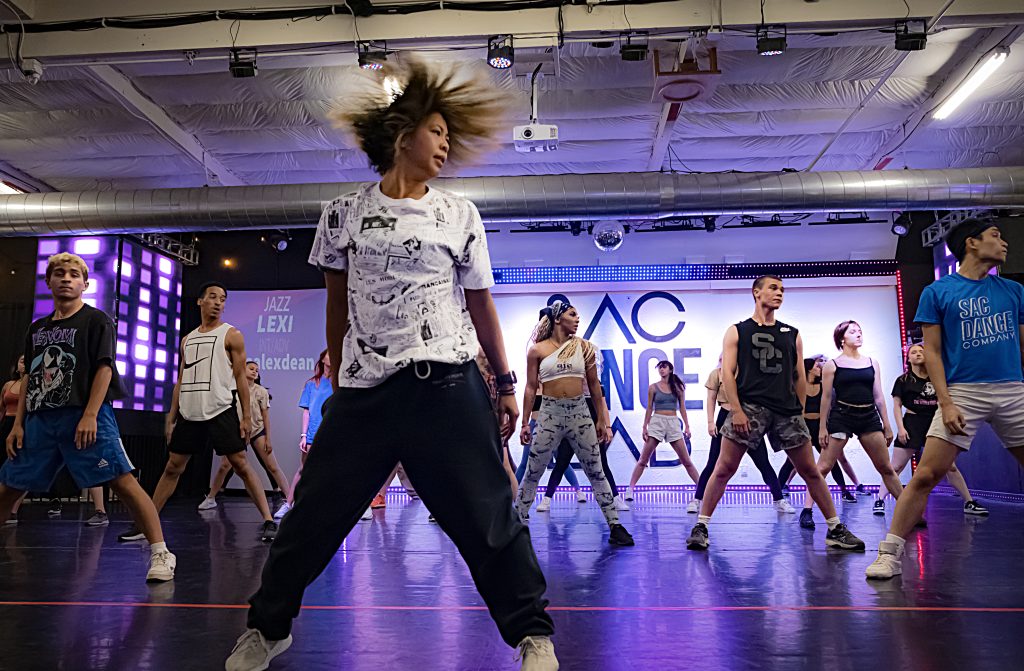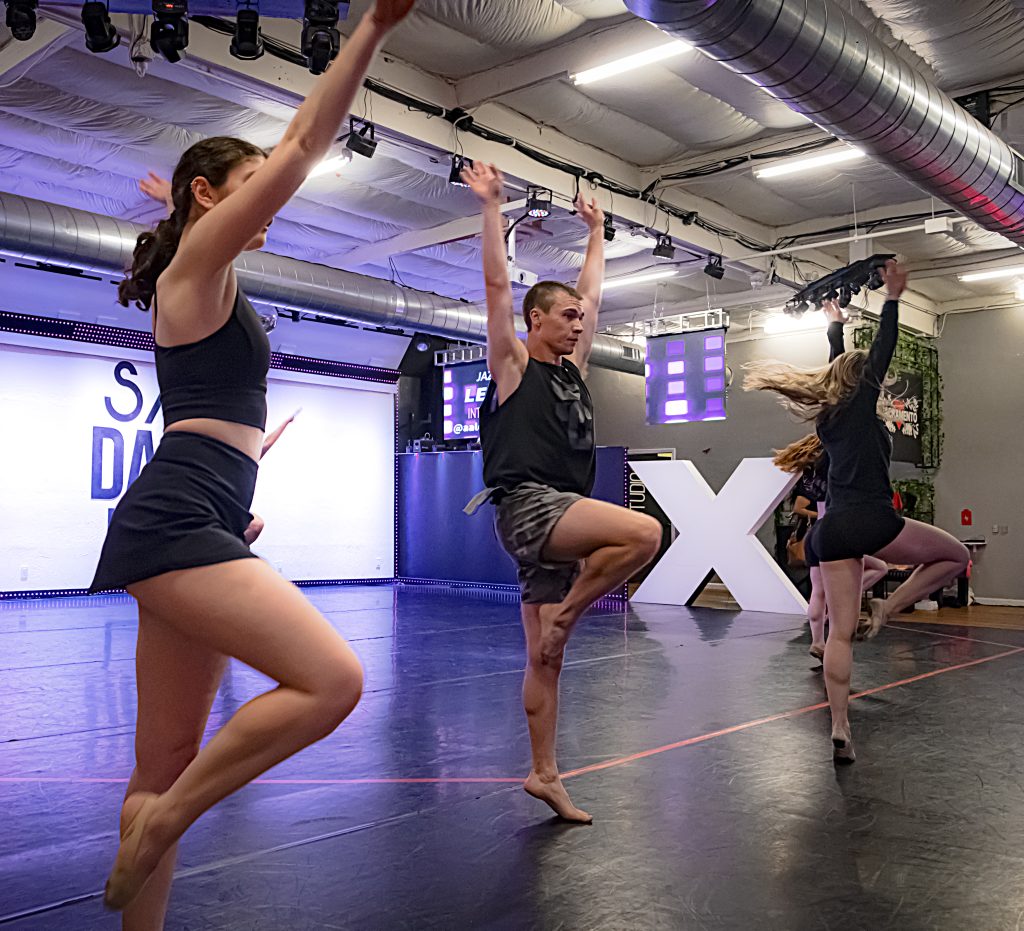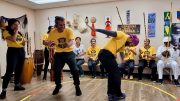By Dina Bugayevskaya
Isela Ortiz always knew that she wanted to open a dance studio for adults. She had performed on the dance team for the Sacramento Kings for five seasons, an experience that made her realize she could create a studio that would provide training specifically for those dancers who also wanted to be selected for the Kings’ team.
“We started out of the need to offer training for dancers who wanted to be professional,” says Ortiz, creative director of Sac Dance Lab, which opened in 2017 and moved to its current location in 2020. But, over time, that focus changed. The studio now accommodates adults of all skill levels.
Dance classes are typically more popular for children than for adults. While residents of big cities can typically find classes of different levels for adults, in Sacramento there are only a handful of studios that emphasize dance classes for adults.
Adults seek dance classes for three main reasons. Perhaps they have never danced before but want to start a new hobby. Or they danced as children and wanted to be back in the studio. Or they have been dancing all their lives and want to keep doing it, possibly even as a career.

Sac Dance Lab, located on 1807 Tribute Road in Sacramento, offers between six and 11 classes daily, and three classes on Saturday. They cover the genres of hip hop, contemporary, jazz, jazz funk, afro vibes, lyra and ballet. And while the business has evolved over the years, the overall goal is to give adults the chance to try or improve in dance — which, for some, means facing some big fears.
And for Ortiz, she says her big-picture mission is to build the creative economy, where professional dancers can get paid a living wage and afford to stay in Sacramento.
Building Local Talent
If a dancer wants to have a professional career, there are only two places in Sacramento that offer employment for dancers with high-caliber quality and a recurring paycheck — Sacramento Kings and Sacramento Ballet. “Out of thousands of dancers that could go professional in Sacramento, there are like 60 spots for that work,” Ortiz says.
But Sacramento doesn’t pay entertainers a fair wage. “(It’s) not sustainable for them to live here and work here,” Ortiz says.
There is another option for dancers to work in the industry: When some artists perform in Sacramento, they usually call local dancers to work with them. But they pay pretty low, according to Ortiz. This forces some talented local dancers to relocate to big cities, such as Los Angeles, San Francisco, New York and Miami. And that leaves Sacramento with an absence of talent.
Ortiz thinks that the size of the city and the fact that in Sacramento sustaining artists are not really valued are the reasons for the dance industry not being that popular. “We are often asked to work for free or for exposure,” Ortiz says. “And that limits how much we can actually contribute to the creative economy.”
Isabella Ruvalcaba, a teacher at Sac Dance Lab, says the Bay Area and Los Angeles have a much stronger artistic and creative community. Dance classes for both children and adults can help support a better dance industry locally, Ruvalcaba and Ortiz both say.

Sac Dance Lab gets a lot of calls with a request for kids classes. Ortiz thinks that studios geared toward youth can be cost-prohibitive or too competitive (a Sac Dance Lab class costs $15 and they offer class packs at different levels). As those children grow up and want to keep dancing in Sacramento, they now have the option of Sac Dance Lab.
Ruvalcaba says there is a need to educate the youth that they don’t have to be done with dance after 18 years old. Adolfo Mendez, a contemporary and jazz dance instructor from Sac Dance Lab, agrees, but adds that more spaces geared to adults need to exist: “Having a space where they don’t have to worry about kids and where they are taught like adults.”
Facing Their Fears
There is another reason why the dance industry is not that popular for adults: fear. “I imagine if people had less fear to get into it, it would be more approachable,” Ortiz said of those adults who might want to learn dance.
Many adults care how they look during the class, and are self-conscious about other students critiquing their moves. Ortiz’s advice to new students? “Just come in and go take a class.” That exposure is the way to overcome the fear, she says.
Lauren Lucy, a dancer at Sac Dance Lab, says many adults think they should be done with dancing after high school or college. “I feel like the Sacramento community believes that if they haven’t made it onto a professional team or don’t move to Los Angeles to be in the dance industry, then that’s it for them,” Lucy says. “But that is the farthest from the truth.”
Lucy thinks that dancers should make the dance industry more popular through example. “Showing Sacramento all adults can accomplish any goal they have for dance is essential — whether it’s to dance for fun or to dance professionally,” she says.
Ortiz says many students will find a sense of community at the studio. “Community is probably the biggest driver for the studio,” she says.
Julia Irvine, a dancer at Sac Dance Lab, was looking for quality studios and found this business. “Sac Dance Lab has been a place where I can grow as a dancer and be challenged in a safe, welcoming and positive environment. It has provided me with valuable experience,” Irvine says.
Irvine believes many adults stop dancing because they fill their schedule with work and responsibilities and they feel guilty for doing something they just like to do.
Irvine believes that it is OK to do things you enjoy even if you are not good at it. “The beauty of Sac Dance Lab,” she says, “is that it is a place that welcomes both professional dancers, adults with zero experience who just want to have fun, and everything in-between.”
This story was done in collaboration with Sacramento City College’s journalism department.



Be the first to comment on "How one Sacramento studio is making dance more accessible for adults"